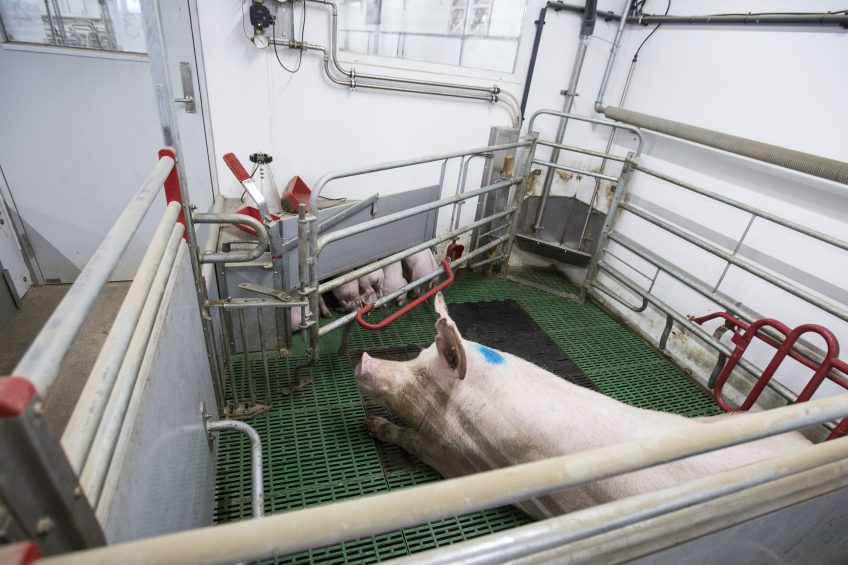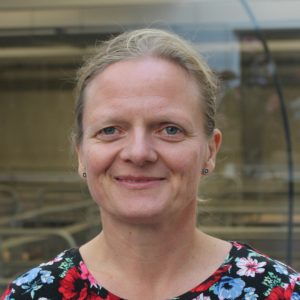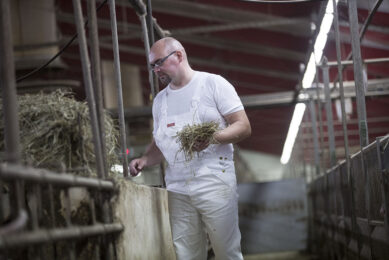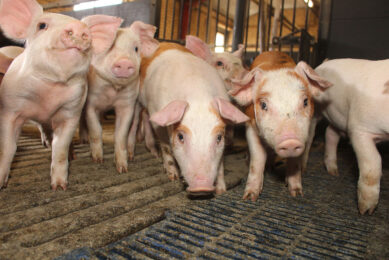Striving for perfection in free farrowing pens

Welfare and housing expert Vivi Aarestrup Moustsen has been involved in Danish trials to test 10 different designs for free lactation pens. Here, she shares some experiences – she’s convinced that free farrowing pens is the future of pig production.
One year of testing 10 different designs of farrowing pens for loose sows in the same herd gave us a lot of experiences – and also more questions to answer.
The different designs were promising, but no design was perfect. Two thirds of the marks given in the test were either ‘good’ or ‘very good’, but no design received ‘good’ or ‘very good’ for all evaluation points indicating that all pen designs could be improved.

What does this Danish farm with 10 different pen designs look like? Correspondent Stuart Lumb visited Siljebjerggaard Farm last year.
Most pen designs received high marks
When it came to placement of sow in the pen, dimension of the pen, space for piglets, piglet use of creep area, ease of weaning sows and piglets, safety for staff, hygiene and easy to clean, most designs received ‘good’ or ‘very good’. Points that need further improvements were for instance ways to avoid knee injuries on the piglets’ front legs and piglet surveillance.
The latter being a variety of challenges such as no creep area to enclose the piglets in during handling, difficulties keeping the lit of the creep open on its own or difficult to reach all piglets in the creep. The limited number of sows and variation amongst sows in parity and litter size meant that production results could not be compared between designs.
Providing farrowing pens for a test
In a project led by Lisbeth Ulrich Hansen, the SEGES Danish Pig Research Centre (PRC) asked all Danish producers of pen equipment in spring 2016 if they would provide pens to be included in a test of pens for loose lactating sows. They responded positively! In addition, 3 pen designs from equipment producers outside Denmark were included in the test.
The conditions determined by PRC were that the pens should comply with Danish legislation, be suitable for housing loose lactating sows and it should be pens, the companies were prepared to sell to Danish pig producers.
To have similar genetics and same staff, the test was run at a commercial farm, where PRC rented part of a building and in collaboration with the pig producer and the pen producers placed the pens.
In total: 10 different designs
It was a significant setup, with 10 different designs. There were 5 different sections to accommodate the different preferences for temperature etc. So designs with fully slatted flooring and non-covered creep area were in the same section allowing for a higher room-temperature, designs with partly solid flooring were in another section with a lower temperature and so on. Each design had one row in the section it was placed in and depending on the pen dimension 6-9 pens of each design were placed. To have similar number of repetitions across designs, 6 pens of each design were included in the trial and extra pens were buffer pens.
The daily management was similar to the rest of the farm (1,000 sows) and the sows were assigned to the pen designs before being moved to the farrowing unit to assure even distribution of parity and body condition across the different designs.

Trial period including different seasons
The trial period was a year to include different seasons. The sows were placed in the pens during the week prior to farrowing and weaned at approximately 4 weeks leading to 10 batches during the 1-year trial period. Sows included were hyper-prolific Danish crossbreds (Landrace x Large White). Litters were equalised to an average of 14.7 piglets per litter. Surplus piglets were nursed by other sows in pens not included in the trial.
A year later, we are more experienced. With 10 batches and 6-9 pens of each design, a total of 60-90 sows farrowed in each design. Average parity was 2.9; born alive 17.1 piglets/litter and litter size at equalisation 14.7 piglets/litter. In 9 out of 10 designs, it was possible to confine the sows around farrowing. An often mentioned barrier for a wider implementation of pens for loose lactating sows is the risk of higher piglet mortality when sows are loose. However, the variation between sows and litters and the limited number of sows within each design means that it’s not possible to compare production results between the different designs.
Once complete, an overview of the results can be found at the publication page of the SEGES website.

Want to visit more pig farms in Denmark – or elsewhere in the world? Try out the Pig Progress Farm Visits tool
What’s next in loose housing research?
Where do we go from here? We increase research and development in loose housing of lactating sows. The many promising results from commercial herds with full scale production leaves no doubt that it’s the future. We need to continue to improve pen design, and definitely increase focus on management routines so new employees, new herds, new managers have a toolbox to ensure success with loose lactating sows.
And we read with great interest the report from Austria where a tremendous work comparing pens and strategies for loose lactating sows was carried out in the same period.











